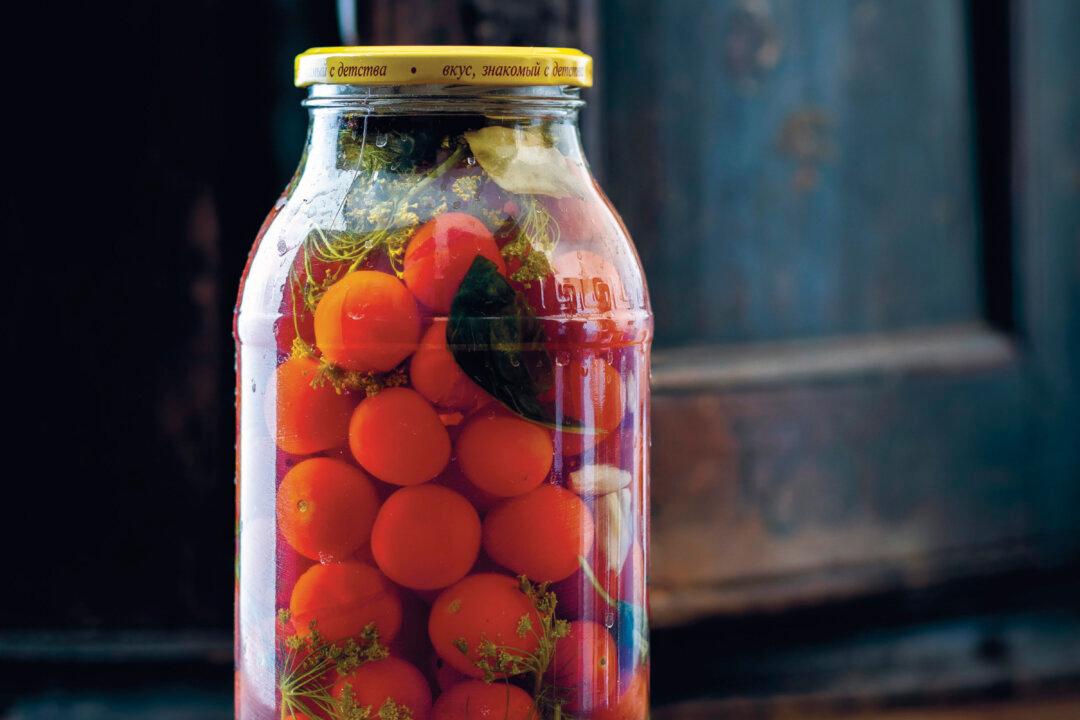Brined Tomatoes
When the great poet Alexander Pushkin lay dying after a duel, he begged for brined cloudberries—his last wish and last words. It was February, and even in his mortally wounded state, he knew that the berries wouldn’t be fresh but preserved, and perhaps, like many of his compatriots, he preferred them this way. No wonder. Preserving fruits and berries in brine gives them the slightly sour flavor that Russians love. Lingonberries taste good this way too and it’s fun to experiment with different fruits, such as watermelon and apples, the classic preparation. Tomatoes are also piquant when brined.This recipe yields ever-so-slightly-sweet tomatoes. I like to use small ones, which absorb flavor faster, but as long as they’re firm, you can use any tomatoes on hand. And if you don’t have horseradish or currant leaves, just toss in some celery or extra dill. Serve these tomatoes as part of a zakuska spread, or as an accompaniment to roast meat. They’re so tasty that I often just pop one into my mouth for a snack.






